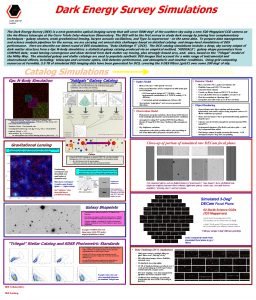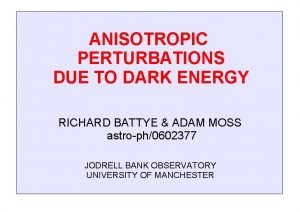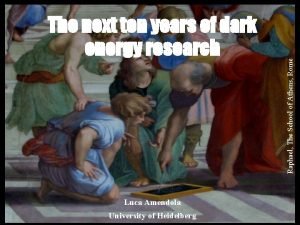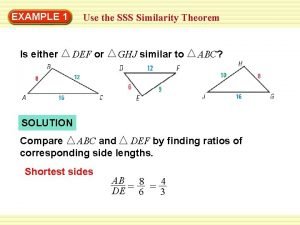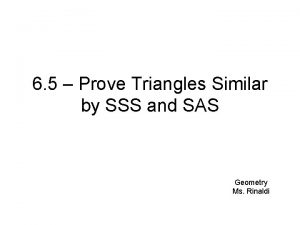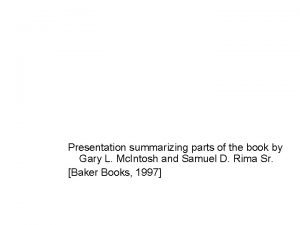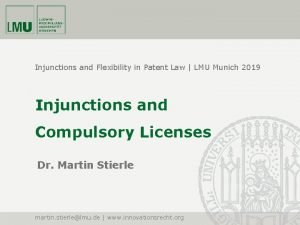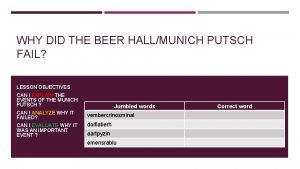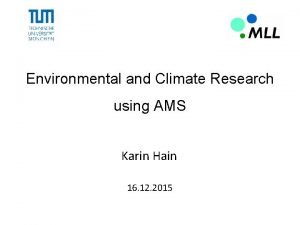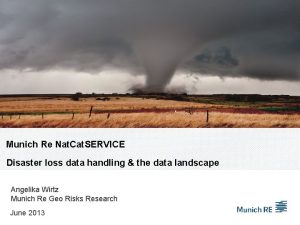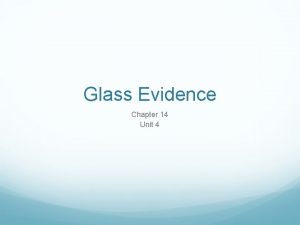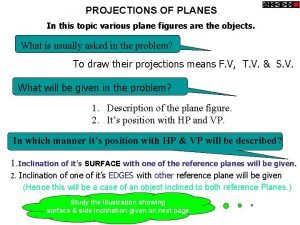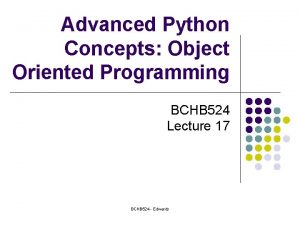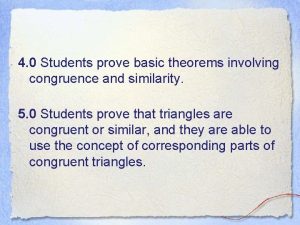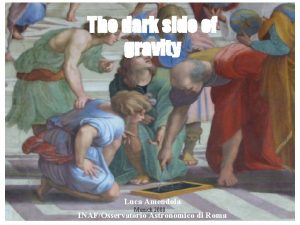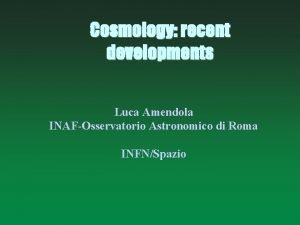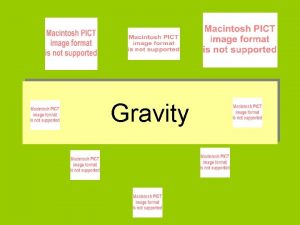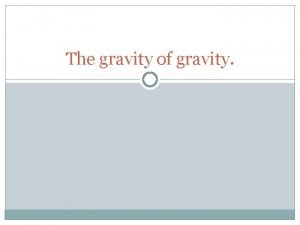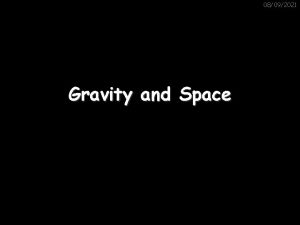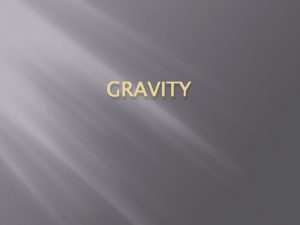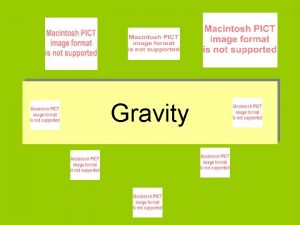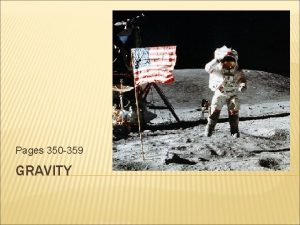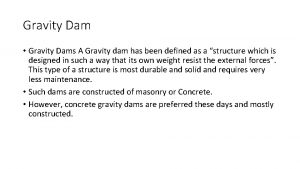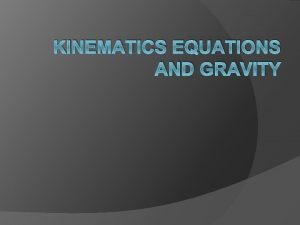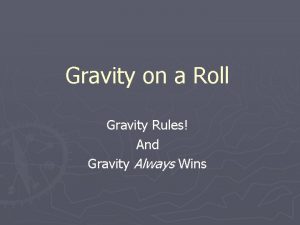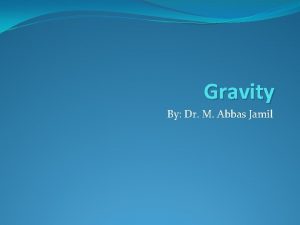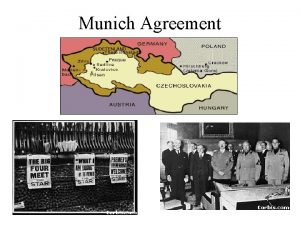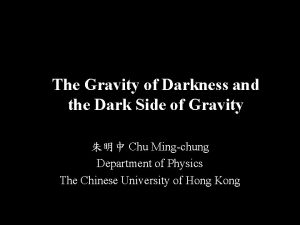The dark side of gravity Luca Amendola Munich









































- Slides: 41

The dark side of gravity Luca Amendola Munich 2008 INAF/Osservatorio Astronomico di Roma

Why DE/MG is interesting g How to observe it Munich 2008

Observations are converging… …to an unexpected universe Munich 2008

Classifying the unknown 1. Standard cosmology: 2. GR gravitational equations + FRW metric a) change the equations i. e. add new matter field (DE) or modify gravity (MG) b) change the metric i. e. inhomogeneous non-linear effects, void models, etc Munich 2008

Modified gravity Which are the effects of modified gravity at Munich 2008 { background linear non-linear } level ?

Cosmology and modified gravity in laboratory in the solar system } very limited time/space/energy scales; only baryons at astrophysical scales complicated by non-linear/nongravitational effects at cosmological scales unlimited scales; mostly linear processes; baryons, dark matter, dark energy ! Munich 2008

How to hide modified gravity (in the solar system) L. A. , C. Charmousis, S. Davis, PRD 2008, ar. Xiv 0801. 4339 Generalized Brans-Dicke. Gauss-Bonnet Lagrangian Solution in static spherical symmetry in a linearized PPN metric with Conclusion: there are solutions which look “Einsteinian” but are not… Munich 2008

Simplest MG (I): DGP (Dvali, Gabadadze, Porrati 2000) brane L = crossover scale: 5 D Minkowski bulk: infinite volume extra dimension gravity leakage • 5 D gravity dominates at low energy/late times/large scales • 4 D gravity recovered at high energy/early times/small scales Munich 2008

Simplest MG (II): f(R) The simplest MG in 4 D: f(R) eg higher order corrections ü f(R) models are simple and self-contained (no need of potentials) ü easy to produce acceleration (first inflationary model) ü high-energy corrections to gravity likely to introduce higherorder terms ü particular case of scalar-tensor and extra-dimensional theory Munich 2008

Is this already ruled out by local gravity? is a scalar-tensor theory with Brans-Dicke parameter ω=0 or a coupled dark energy model with coupling β=1/2 α λ Munich 2008 Adelberger et al. 2005

The fourfold way out of local gravity { depend on time depend on space depend on local density depend on species Munich 2008

Sound horizon in R+R - n model Turner, Carroll, Capozziello etc. 2003 in the Matter Era ! Munich 2008 L. A. , D. Polarski, S. Tsujikawa, PRL 98, 131302, a s t r o - p h / 0 6 0 3 1 7 3

A recipe to modify gravity Can we find f(R) models that work? Munich 2008

MG in the background (JF) An autonomous dynamical system characteristic function Munich 2008

MG in the background Ωγ ΩK Munich 2008 ΩP

Classification of f(R) solutions For all f(R) theories: de. Sitter acceleration, w = -1 wrong matter era (t 1/2) good matter era (t 2/3) for m≥ 0 General acceleration, any w Munich 2008

The power of the m(r) method D E T JEC RE REJ D E T JEC RE Munich 2008 D E T EC

The triangle of viable trajectories cosmologically viable trajectories Notice that in the triangle m>0 L. A. , D. Polarski, S. Tsujikawa 2007 PRD astro-ph/0612180 Munich 2008

Local Gravity Constraints are very tight Depending on the local field configuration depending on the experiment: laboratory, solar system, galaxy see eg. Nojiri & Odintsov 2003; Brookfield et al. 2006 Navarro & Van Acoyelen 2006; Faraoni 2006; Bean et al. 2006; Chiba et al. 2006; Hu, Sawicky 2007; Mota et al. 2006; . . Munich 2008

c LGC+Cosmology Take for instance the ΛCDM clone Applying the criteria of LGC and background cosmology i. e. ΛCDM to an incredible precision Munich 2008

What background hides perturbations reveal The background expansion only probes H(z) The (linear) perturbations probe first-order quantities Full metric reconstruction at first order requires 3 functions Munich 2008

Two free functions At the linear perturbation level and sub-horizon scales, a modified gravity model will modify Poisson’s equation induce an anisotropic stress (most of what follows in collaboration with M. Kunz, D. Sapone) Munich 2008

MG at the linear level standard gravity Boisseau et al. 2000 Acquaviva et al. 2004 Schimd et al. 2004 L. A. , Kunz &Sapone 2007 scalar-tensor models f(R) Bean et al. 2006 Hu et al. 2006 Tsujikawa 2007 DGP Lue et al. 2004; Koyama et al. 2006 coupled Gauss-Bonnet see L. A. , C. Charmousis, S. Davis 2006 Munich 2008

Reconstruction of the metric Correlation of galaxy positions: galaxy clustering Correlation of galaxy ellipticities: galaxy weak lensing Munich 2008

Peculiar velocities Correlation of galaxy velocities: galaxy peculiar field redshift distortion parameter =0. 70± 0. Munich 2008 2 Guzzo et al. 2008

The Euclid theorem Observables: Conservation equations: 5 unknown variables: We can measure 3 combinations and we have 2 theoretical relations… Theorem: lensing+galaxy clustering allows to measure all (total matter) perturbation variables at first order without assuming any particular gravity theory Munich 2008

The Euclid theorem Observables: Conservation equations: 5 unknown variables: We can measure 3 combinations and we have 2 theoretical relations… Theorem: lensing+galaxy clustering allows to measure all (total matter) perturbation variables at first order without assuming any particular gravity theory Munich 2008

The Euclid theorem From these we can estimate deviations from Einstein’s gravity: Munich 2008

Euclid A geometrical probe of the universe proposed for Cosmic Vision All-sky optical imaging for gravitational lensing = + All-sky near-IR spectra to H=22 for BAO Munich 2008

Weak lensing Euclid forecast Present constraints DGP LCDM Weak lensing tomography over half sky Munich 2008 L. A. , M. Kunz, D. Sapone ar. Xiv: 0704. 2421 Di. Porto & L. A. 2007

Power spectrum Galaxy clustering at 0<z<2 over half sky Munich 2008 . . if you know the bias to 1%

Non-linearity in BAO Matarrese & Pietroni 2007 Munich 2008

Poster advertisement Cosmic parallax Garcia-Bellido & Haugbolle 2008 See poster by Miguel Quartin… LTB void model Quercellini, Quartin & LA, ar. Xiv 0809. 3675 Munich 2008

Conclusions Two solutions to the DE mismatch: either add “dark energy” or “dark gravity” High-precision next generation cosmological observations are the best tool to test for modifications of gravity It is crucial to combine background and perturbations A full reconstruction to first order requires imaging and spectroscopy: Euclid Munich 2008

The bright side of Munich Luca Amendola INAF/Osservatorio Astronomico di Roma Munich 2008

Weak lensing measures Dark Gravity scalar-tensor model Weak lensing tomography over half sky Munich 2008 V. Acquaviva, L. A. , C. Baccigalupi, in prep.

Non-linearity in WL =1000, 3000, 10000 Weak lensing tomography over half sky Munich 2008

Non-linearity in BAO Matarrese & Pietroni 2007 Munich 2008

Conclusions: the teachings of DE Two solutions to the DE mismatch: either add “dark energy” or “dark gravity” The high precision data of present and near-future observations allow to test for dark energy/gravity New MG parameters: γ, Σ A general reconstruction of the first order metric requires galaxy correlation and galaxy shear Let EUCLID fly. . . Munich 2008

References Basics: L. A. , Phys. Rev. D 62, 043511, 2000; CMB: L. A. , Phys. Rev. Lett. 86, 196, 2001; Bias: L. A. & D. Tocchini-Valentini, PRD 66, 043528, 2002 WMAP: astro-ph/0303228, Phys Rev 2003 N-body: A. Maccio’ et al. 2004 Dilatonic dark energy: L. A. , M. Gasperini, D. Tocchini-Valentini, C. Ungarelli, Phys. Rev. D 67, 043512, 2003 Munich 2008

Current Observational Status: Weak CFHTLS Lensing Hoekstra et al. 2005 Semboloni et al. 2005 First results From CFHT Legacy Survey with Megacam Type Ia Supernovae (w=constant and other priors assumed) Astier et al. 2005 Munich 2008
 Luca amendola
Luca amendola Finsler
Finsler Amendola heidelberg
Amendola heidelberg Luca amendola
Luca amendola Sss similarity theorem examples
Sss similarity theorem examples Angle-angle similarity
Angle-angle similarity Sss similarity theorem
Sss similarity theorem Identifying similar triangles
Identifying similar triangles Gravity for dummies and dummies for gravity equations
Gravity for dummies and dummies for gravity equations Dark matter and dark energy presentation
Dark matter and dark energy presentation In a dark dark town
In a dark dark town Dark side of romanticism
Dark side of romanticism Nnn dark side
Nnn dark side The dark side of individualism
The dark side of individualism Dark side of leadership
Dark side of leadership Bob dylan dark side of the road
Bob dylan dark side of the road Overcoming the dark side of leadership
Overcoming the dark side of leadership Bellamy salute
Bellamy salute What year was the treaty of versailles signed
What year was the treaty of versailles signed Lmu munich law
Lmu munich law Why did the beer hall putsch fail
Why did the beer hall putsch fail Autoportrait (dürer, munich)
Autoportrait (dürer, munich) Munich weather radar
Munich weather radar Peter mortimer munich
Peter mortimer munich Karin hain
Karin hain Munich airport car parking
Munich airport car parking Hotels oktoberfest munich
Hotels oktoberfest munich Language german
Language german Bayern munich igraci
Bayern munich igraci Molching himmelstrasse
Molching himmelstrasse Igsos
Igsos Munich putsch sources
Munich putsch sources Hitler knight
Hitler knight Why was the munich conference unsuccessful
Why was the munich conference unsuccessful Munich re nat cat service
Munich re nat cat service Condylar angle
Condylar angle Glass will break first on the weaker side, the side:
Glass will break first on the weaker side, the side: A thin rectangular plate of sides 60mm
A thin rectangular plate of sides 60mm Side by side stuff
Side by side stuff Perfect competition side by side graphs
Perfect competition side by side graphs Videocon side by side refrigerator
Videocon side by side refrigerator Side angle side theorem
Side angle side theorem
